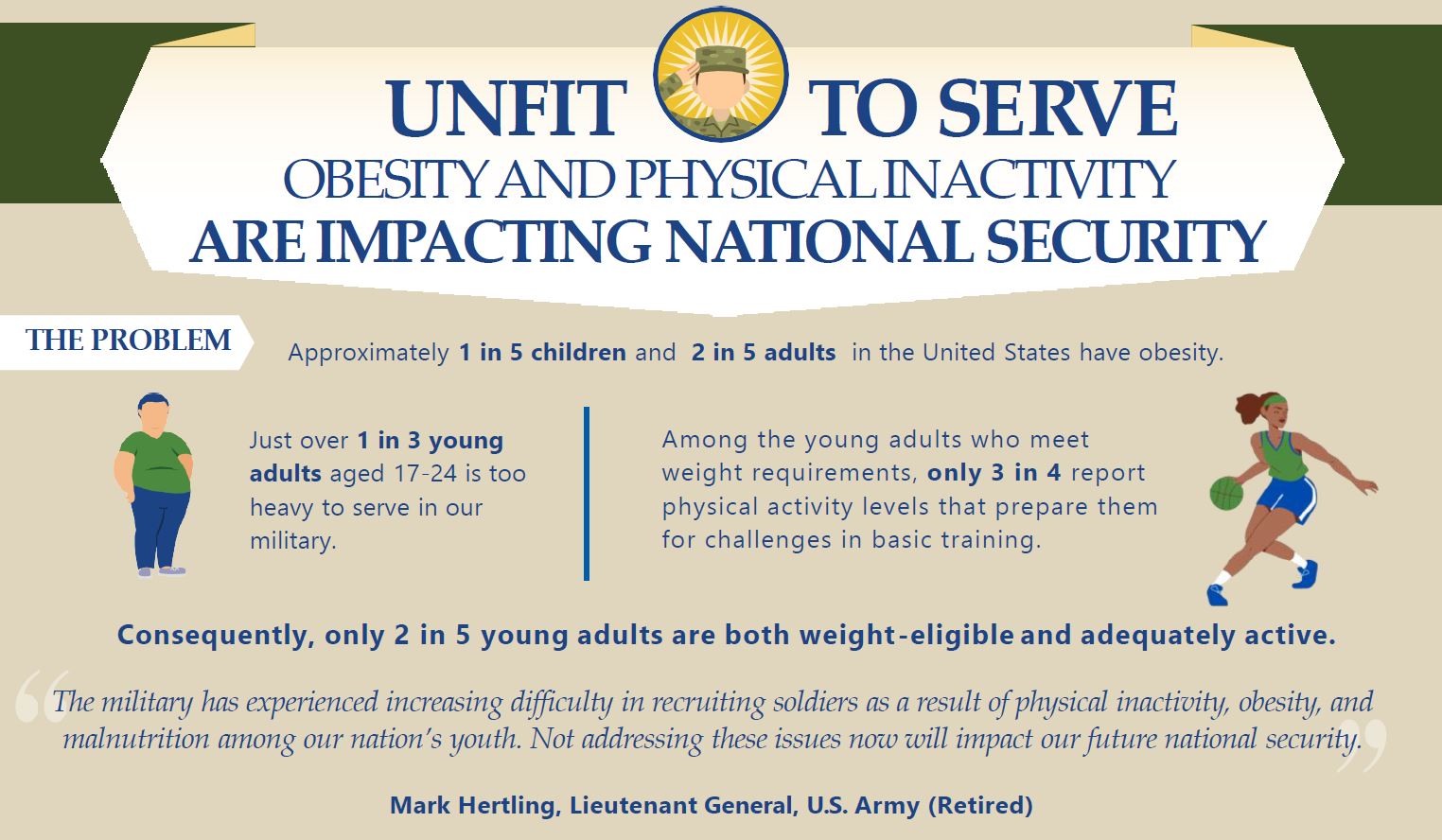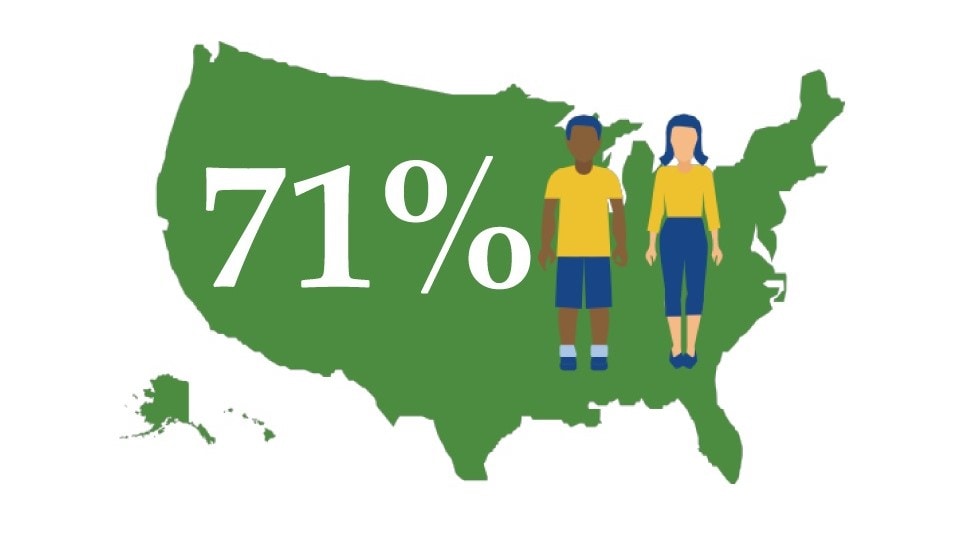What to know
Obesity and physical inactivity are impacting national security. Only 2 in 5 young adults are both weight-eligible and adequately active to join the military. States and communities can improve the health and well-being of current and future service members by creating healthier environments to support military readiness and national security.

The problem
- Approximately 1 in 5 children and 2 in 5 adults in the United States have obesity.
- Just over 1 in 3 young adults aged 17–24 is too heavyA to serve in our military.
- Among the young adults who meet weight requirements, only 3 in 4 report physical activity levels that prepare them for basic training.
- Consequently, only 2 in 5 young adults are both weight-eligibleB and adequately active.C
Mark Hertling, Lieutenant General, U.S. Army (Retired)
Ineligible to serve

- Three most common reasons young people are ineligible:
- Overweight or obesity
- Educational deficits
- Criminal or drug abuse record
- Overweight or obesity
- Individuals in the 17 to 24 age range account for 90% of military applicants.
Obesity impairs military readiness
In 2020, 19% of active-duty service members had obesity, up from 16% in 2015. These individuals are less likely to be medically ready to deploy.
Between 2008 and 2017, active-duty soldiers had more than 3.6 million musculoskeletal injuries. One study found that active-duty soldiers with obesity were 33% more likely to get this type of injury.
General Richard E. Hawley, U.S. Air Force (Retired)
Obesity and physical inactivity are costly
The Department of Defense (DOD), our nation's largest employer, spends about $1.5 billion annually in obesity-related health care costs for current and former service members and their families, as well as costs to replace personnel who do not met fitness requirements.
Lost workdays due to overweight and obesity for active-duty military personnel is 658,000 days per year. This costs the DOD $103 million per year.
Physical inactivity is associated with not completing basic training across the services.
Making states and communities healthier
States and communities can impact the health and well-being of current and future service members by:
- Promoting community designs that support inclusive, safe, and accessible places for people to be physically active in communities with many service members.
- Increasing the availability of healthier foods and beverages on military bases and in the surrounding communities where many services members live.
Richard R. Jeffries, Rear Admiral, U.S. Navy (Retired) and former Medical Officer of the U.S. Marine Corps
We are making a difference
CDC and its partners are working together to create healthy communities that support service member recruitment, readiness, and retention by:
- Connecting military communities with state and local public health experts to tailor strategies to prevent chronic diseases associated with poor nutrition, lack of physical activity, and obesity.
- Identifying opportunities to implement strategies that can help prevent health risk behaviors among service members and their families.
- Educating DOD providers, such as clinicians and family programs, to better connect service members with national and state public health resources.
- “Too heavy” refers to a BMI of over 27.5
- Weight-eligible refers to a BMI between 19.0 and 27.5
- Adequate physical activity for entering basic military training was defined as ≥ 300 minutes/week of equivalent moderate-intensity aerobic physical activity from all domains, consistent with guidance from the U.S. Army Pre-Basic Combat Training Physical Training Program and the Physical Activity Guidelines for Americans, 2nd edition
